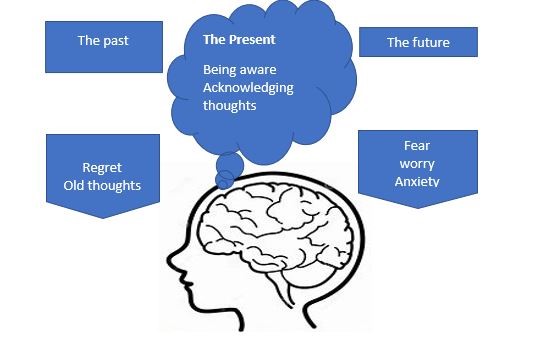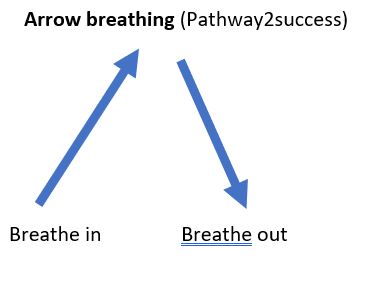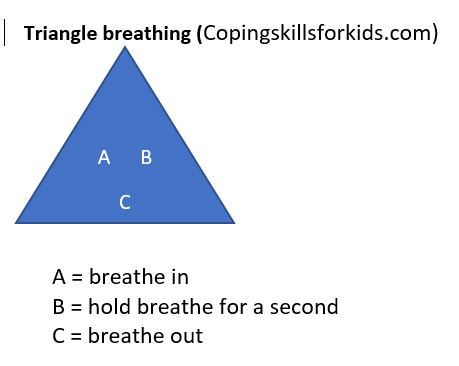What is mindfulness and could it help you in the classroom and on a personal level?
The answer is – perhaps it can!
Mindfulness has become an increasingly popular topic in the past few years as people report significant benefits in using the simple techniques.
Currently, there are Mindfulness personal development courses being offered to teachers in the Department of Education NSW, mindfulness training being offered in other workplaces and even schools with a range of apps developed so you can listen to mindfulness meditations on your devices.
So, what is mindfulness?
Mindfulness has been around for 2500 years originating from Buddhist meditations. More recently it has even been incorporated into a range of psychological therapies and simple to use meditations for everyday life.
A Definition of Mindfulness
Mindfulness is a technique that helps you focus your attention on the present. Thoughts and feelings are acknowledged but not reacted to. With practice, you can use these strategies to clear your mind. Diagram number 1 below helps to explain the concept in more detail.

People who use mindfulness techniques report feeling less stressed, have improved concentration and attention, and are better able to manage those intrusive thoughts.
Mindfulness practice is simple to do and can be a great addition to your everyday activities in the classroom. An easy way to get started is to practice when doing the basic things like waiting for the computer to turn on or while standing at the photocopier.
Mindfulness in Action
Here is a true story I often use to demonstrate how easy mindfulness techniques can be:
One day, whilst I was walking to the bus stop on my way to work, I decided to give mindfulness a try. I was always so busy in the mornings and my thoughts were often racing as I walked. Would I make the bus in time? What was happening in the day ahead? Did I remember to hang out the washing? And so on.
I remember one day thinking that I would try being mindful and present as I walked to the bus. I tried to focus on my senses and take in the details of the gardens I walked past and the cars I could hear driving by, to slow my mind down. Any thoughts that came into my mind I tried not reacting to as I began focusing on my breathing, each inhale and exhale.
As I approached the bus stop, my last part of the walk involved crossing over a very big roundabout. That day for the first time (in over 1 year of taking the bus) I noticed a big old tree covering the roundabout. I had never seen that tree before, and I was amazed that I had not even noticed it! I felt less stressed and connected to the environment after just a few minutes of thinking. It made me feel more attentive and focussed and ready to tackle the day ahead.
A Mindfulness Breathing Exercise
Here is a simple mindful breathing exercise to get you started:
- Set a timer on your phone for 1-minute
- Sit comfortably and close your eyes or look at the timer or clock.
- Focus on your breathing and the process of breathing in and out. When other thoughts come into your head just try to keep thinking about your breathing. If that’s not possible that’s okay, acknowledge the presence of these thoughts and just keep your focus on your breathing.
- When the minute is up, slowly come back to the present, by opening your eyes, looking away from the clock. The results should be a sense of calm and feeling less stressed.
Adaption for language: Draw a visual prompt on the board and trace your hand along the prompt as the class join with you in breathing in and out. For example, you could use arrow breathing or triangle breathing concepts. Images below are ideas and many other shapes could be used.
Tip: It is a good idea to have your mindfulness practice established and attempt it yourself before beginning to teach it to your class.
Mindful Eating
- Sit down in a comfortable position and relax.
- Look at the food and notice how it looks, smells, tastes, texture and muscles used to chew it slowly.
- If your mind begins to wander, focus on your breathing and return to your eating.
- Food can taste very different when eaten in this way.
Tip: This is a fun activity to do in class with chocolate or a piece of fruit.
Adaption for language: Display pictures of the 5 senses, pointing to the relevant picture as you encourage students to explore the food experience through their sense of smell, taste and so on.
Through reading about my tree example and the simple exercises provided above, you should now have a good understanding of mindfulness. I hope you are ready to try them out on your own or in the classroom and see how implementing this practice can be beneficial for decreasing stress and increasing attention and focus in the classroom. Enjoy!
 Author: Maree Stevens, BAdVocEd; GCert Sp Ed; M SocWk; M HumServ; GDipCouns; GCert MentalHlthPrac.
Author: Maree Stevens, BAdVocEd; GCert Sp Ed; M SocWk; M HumServ; GDipCouns; GCert MentalHlthPrac.
Maree is a Social Worker with over 20 years’ experience working with vulnerable groups of people in the human services, health and education sectors within government, at a federal and state level as well as in the private and not for profit sector. She has an undergraduate degree in Adult Education and post graduate qualifications in the Education and the Human Services sectors including a Graduate Certificate in Special Education; Master of Human Services, Rehabilitation Counselling; Master of Social Work, (Qualifying); Graduate Diploma of Counselling; and Graduate Certificate in Mental Health Practice.
Maree is currently a registered teacher in QLD; a member of Australian Rehabilitation Counsellors Association and a member of the Australian Association of Social Workers. Her areas of interest include mental health and education; mental health practice; self-harm and suicide; trauma informed practice and domestic violence.
Maree is currently not taking bookings. Our team can assist you with placing you with another clinician. Please call Vision Psychology on (07) 3088 5422.
References:
- Mindfulness is really a thing. Retrieved 11 July 2019 from https://www.beyondblue.org.au/personal-best/pillar/wellbeing/yes-mindfulness-is-really-a-thing
- Mindfulness Facts and Guides. Retrieved 8 July 2019 from Sane Australia https://www.sane.org/mental-health-and-illness/facts-and-guides/mindfulness.
- Neill, D. Mindfulness brain image. Retrieved on 11 July 2019 https://www.fs.fed.us/rmrs/mindfulness-tool-box
- Mammino, L. (2019). Mindfulness Image. Retrieved 11 July 2019 Journey to Wellness.
- Tree image. Retrieved 8 July 2019 from Google Images. https://savingourtrees.wordpress.com/tag/roundabouts
- Arrow breathing image. Adapted from Mindfulness Activities. The Pathway 2 Success 2016. Triangle breathing image. Retrieved from 12/7/19 from https://www.copingskillsforkids.com

